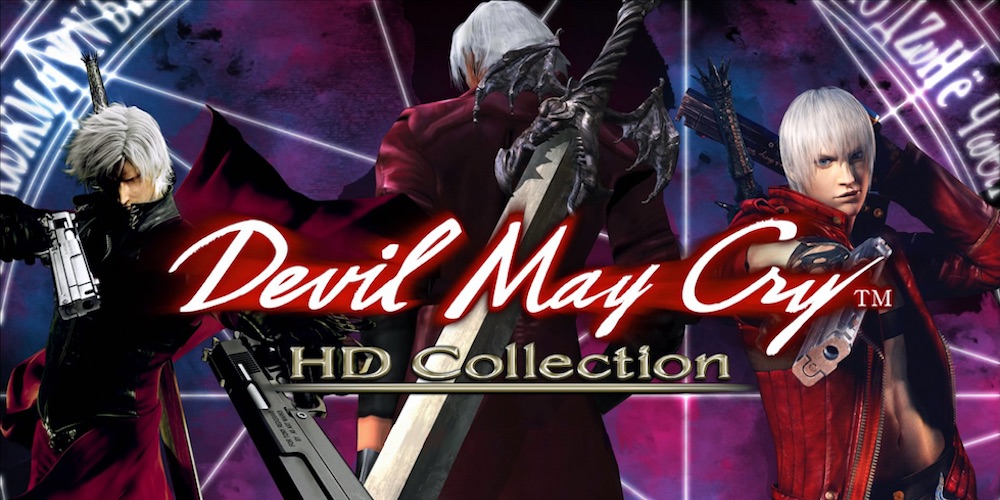
Preying on nostalgia continues to be a depressingly cynical cash cow for publishers in the off-months of the year as an increasing number of older games are being palmed off under the banner of “HD Remaster.” Few releases actually earn this title, though, and with recent notable exceptions like Shadow of the Colossus and Crash Bandicoot, it makes it even harder to accept the prominence of resolution-bumped shovelware being used to pad out the second quarter of each year. And yet, like clockwork, Capcom is here once again, fresh off its fortune reversing success with Monster Hunter: World, to resume the status quo with a re-release of a re-release of a trilogy from the early 2000s.
If the annual release schedule was a party, and publishers were the guests and their games the conversations, Capcom would be the suspicious old looking dude telling people about AC/DC concerts from thirty years ago, all the while smelling of engine grease and fermented socks. Sure, the stories are great, but you’ve already heard better stories from more recent times. That, and he looks desperate enough to stab someone if you openly display your disinterest. Or something. Wayward metaphors aside, in the case of the first and third DMC releases, these are some of the most significant action games of all time, but is a re-release of the HD Collection worth your time and money?

Originally billed as an adaption of Inferno, the first canto in the Dante Alighieri’s The Divine Comedy, the DMC games are too ridiculous to maintain such a lofty pretension. Each game follows the adventures of Dante, a half-demon demigod who works as a monster slayer for hire out of his shop, “Devil May Cry.” The plot of each game centres around the same basic premise as Dante descends into a Hell of sorts in the form of a demonic haunted house/tower, fights a bunch of lower-level demons until he gains enough power, skill and equipment to defeat the most powerful demon who happens to be waiting around to slain. There are a few support characters and villains to add some intrigue amidst all the slaughter of Satan’s salarymen, but all are largely one-dimensional, with a signposted bad guy, frenemy or competing badass roles to contrast with Dante’s near-immortal “God of death with a heart of gold” routine.
Simple as they are, it doesn’t matter too much what the characters’ motivations are so long as they’re committing acts of over the top, superhuman badassery with such flair that even bitter old cranks like me have to utter “That was f*cking COOL!” when witnessed. Dante regularly withstands being impaled in-between fits of slow-motion acrobatics graceful enough to make a Russian gymnast blush. He also indulges in plenty of trash-talking before he lays gigantic boss monsters of mythological proportions to waste. There’s occasional innuendo too, and it all adds up to a tone of infectiously playful comic book machismo. Throwing caution entirely to the wind, the nature of the story is indelicate, and it leaves plenty of room to be surprised so long as your disbelief is suspended somewhere within the orbit of Saturn’s innermost rings. The exception is DMC 2 – it’s the maudlin middle child that turned Dante into a mostly silent, sombre bore and should only be played by anally retentive completionists with suffrage complexes.
Despite the fact that these games are almost old enough to vote (in the case of DMC 1, anyway), they’re still a good challenge with enough depth to their combat and manage to mostly replicate the style tone presented in each game’s cutscenes. Style is the driving component of gameplay, too; using a combination of melee and ranged weapons, Dante (or another guest character you may have unlocked) takes on groups of enemies ranging from possessed, pantaloon wearing marionettes to shapeshifting shadow-cats, lizardmen and more. Once the player has landed an attack on an enemy, the “style meter” begins to rank your performance based on the variety of attacks you use and damage you inflict. Melee weapons are capable of multiple combos based on specific rhythms and can lob enemies into the air to be comically juggled with further aerial melee attacks or ranged attacks.

Filling the style meter consistently without taking damage can reward the player with health orbs, or sometimes even special items if you’re good enough. Dante plies his trade with his a multitude of fantastic weapons, manipulating them with awe-inspiring silliness, and they in turn acting weirdly with absurd characteristics. Dante is also capable of transforming into a demon, allowing him temporary health regeneration, increased damage and new attacks. The basic formula is significantly improved upon in DMC 3, expanding the combat system with four style systems to expand his moveset and offer players greater choice in how they play. The four styles take the already bonkers combat and crank it up to 11 by letting the player block, teleport, fling shotguns round like nunchaku, use swords as spears and more. DMC 3 also allows players to switch between a choice of two weapons of each type on the fly, deepening the possibilities of the combo system.
Fights are fast and challenging. Enemies have enough variety of attack and defence patterns to give each encounter nuance, and enemy types are slowly unveiled over the course of a game to keep the action fresh. Boss battles require not only reflexes but also strategy and puzzle-solving skills to win. A fair bit of patience helps too, but if you’re a Souls fan and haven’t played this series, you should feel right at home. Lite-RPG progression also keeps combat evolving as each game moves along, fuelled by red orbs rewarded for defeating enemies, which, in turn, can be used to purchase new moves and upgrades, as well as various consumable items. These single-use items can be used to improve or restore health, your devil trigger, damage all enemies in a room and more. To discourage players from relying on consumables, however, they become more expensive each time they are purchased, forcing players to improve their skills as well as consider their choice of purchases carefully. It adds tension on top of the high level of difficulty, and another wrinkle in the old-school appeal of this series.
The pacing of levels, at least in the case of the first and third instalments, also lends an element of intrigue and variety to proceedings. You’ll follow breadcrumbs of combat and simple puzzles through gothic castles, towers, catacombs and so on, but frequently your path will diverge unexpectedly as the floor may cave in, a previously defeated boss will suddenly appear and chase you through a corridor, or you’ll plunge into a trap-ridden dungeon. You’re likely to die when these surprises arise, but it doesn’t feel cheap as the overall purpose is to make sure the player is always on their toes and is still an excellent means of keeping the player engaged after all these years.

What hasn’t aged well is the glob-awful camera, lock-on mechanics and save system. DMC 1 and 3 both feature a hold-to-lock targeting system, which fares better in the latter game as it has the kindness to tell the player just which enemy they are targeting with an appropriate reticule indicator. DMC 2 has an automatic targeting system, and, like everything else I’ve said about that game, is another perfect reason to stay away from it. The biggest problem with the first game, however, is it becomes frustrating when numerous faster moving enemies swamp you. The best strategy is to keep them at a distance, but this is often difficult as you are unable to tell who the hell you’re shooting at.
This happens not only because there isn’t a targeting indicator, but also because the obscure fixed camera angles focus more on the player character than your opponents. Games influenced by DMC like Bayonetta and God of War solved this problem with the better use of more large-scale arenas where the camera could be pulled back, limiting the possibility of unnecessary confusion. This fact was a constant reminder of how far this genre has come since the original’s release, yet it never overshadowed the experience to the point where it wasn’t enjoyable. The save system, on the other hand, is just plain cruel. Even Souls games are more forgiving in this respect, with their frequent bonfires to return to. In DMC 1, if you haven’t any yellow orbs, you can’t continue. If you don’t have the items or the skills to beat a level after your continue, well you’ll have to start from the beginning of the mission. It’s disrespectful of player’s time, but it conversely makes conquering even a portion of the game feel like a satisfying venture.
Ultimately, the big question with any re-release is whether a game still holds up today, and I think in the case of DMC, it definitely stands the test of time despite showing its age in a few areas. As far as the “HD” component of this collection goes, however, it’s hard not to be disappointed. The original HD Collection on PS3/360 was already a shamefully bare-bones remastering, and this latest port feels like it received the least amount of effort possible. While the resolution has been bumped up, the textures remain as muddy as the day they first appeared on the PS2. Cutscenes are frequently presented in horridly compressed videos, pre-recorded at the jaggiest of resolutions. Menus and cutscenes gaudily retain their original aspect ratios, made for 4:3 aspect televisions, and while it doesn’t diminish the still excellent gameplay, it smacks of laziness of the highest order. When there are recent examples of remasters and remakes being done right, there just isn’t any justification for this type of release let alone its price.

With the outright lazy porting treatment and entirely token presence of DMC 2, it’s difficult to recommend the Devil May Cry HD Collection, especially at its current price. If you have a console from the previous generation, you can find the exact same experience at 720p for significantly cheaper. As for the games themselves, though, they still hold up for the most part, so if you’ve never played them before and are a fan of the hack and slash genre, you owe it to yourself to play the first and third. Just wait for a price drop first if you don’t have any other way to play them.











